László Obbágy
Alte Erbschaft, zeitgemäße Vermittlung. Die katechetische Richtlinie der katholischen Ostkirchen im neuen Direktorium für die Katechese
Eastern Theological Journal 7 (2021) 1, 49-82.
Content
1. Die Vorgeschichte des neuen Direktoriums für die Katechese; 2. Das neue Direktorium und die Ostkatholiken: hochgeschätzte Werte, zu verwirklichende Aufgaben; 3. Weitere Nova des Direktoriums mit Blick auf die katechetische Anschauung der katholischen Ostkirchen; 3.1. Die Katechese: Die Verkündigung der Schönheit Gottes; 3.2. Die kerygmatische Art der Katechese; 3.3. Einige praktischen Fragen des neuen Direktoriums; Schlussgedanken
Abstract
Ancient heritage, modern mediation. The Guidelines for the Eastern Churches in the New Catechetical Directorate. The publication of the new catechetical directorate is a joyous event for the whole Catholic Church. In our study, the elements of the directorate regarding the Eastern Catholic Churches will be examined. The new catechetical directorate addresses the believers of the Eastern Catholic Churches, identifies their esteemed values, sets missions and appoints goals for them. It cites literally the document of the II. Vatican Council entitled Orientalium Ecclesiarum, but also refers to the Code of Canons of the Eastern Churches and to the Liturgical Instruction. The directorate affirms that it is the right and the duty of the believers of the Eastern Churches to preserve, get acquainted with, and live the treasures of their rite. It draws attention to the importance of preserving identity and encourages the Eastern Churches to preserve and pass on faith within their own ecclesiastical traditions. The specific connections of the Bible and the liturgy, the traditions of the given church, the values of patristics, hagiography and iconography should be emphasized in their catechesis. The directorate also points out the importance and mystagogical significance of liturgical feasts. It encourages the catechists to make the divine services familiar, to acquire the knowledge regarding the rite, and to the special path of liturgical catechesis.
The passages dealing with the Eastern Churches are essential elements of the directory. On the one hand, because members of the Eastern Churches are addressed by the responsible organizations of the Vatican as well as the vision of a “church breathing with two lungs” appears at the level of catechesis. On the other hand, because it is by no means a kind of courtesy, good manners or a gesture towards the Eastern rites. Instead, it is a recognition and acknowledgement of the fact that the known path of catechesis in the Eastern Churches can also provide significant lessons for the Western Church in its search for a catechetical path. The practice of the Eastern Churches can, in
many respects, provide a pattern and energy for the implementation of the guidelines suggested in the directorate, for the unified vision and practical application of the kerygmatic, mystagogical and catechumenal nature of catechesis.
Getting acquainted with this honourable catechetical approach of the Eastern Churches in the directorate will certainly enrich the vision of the Western Church as well. At the same time, it draws the attention of the members of the Eastern Churches to the important, indispensably urgent duty of the modern mediation of their own heritage, and – instead of adopting foreign practices that often seem simpler and more practical and are considered modern – to the exciting task of creative actualization and re-reading of the tradition.
